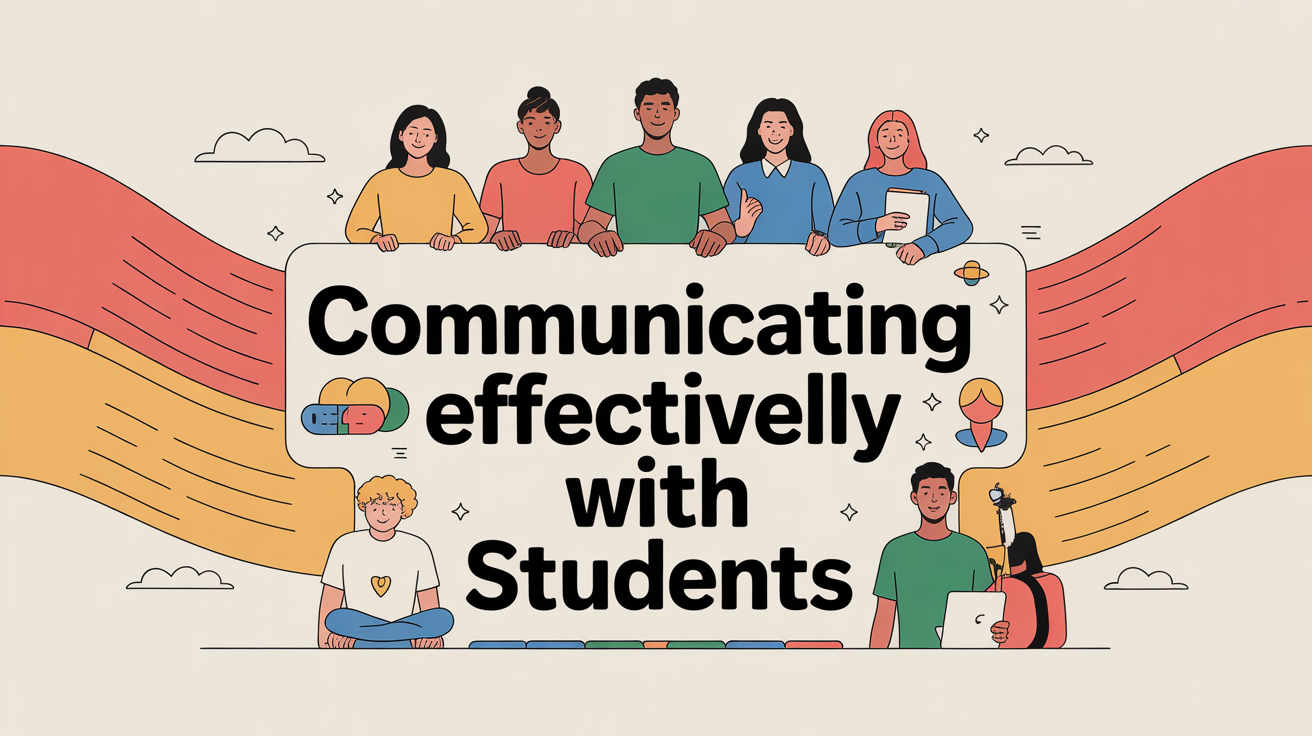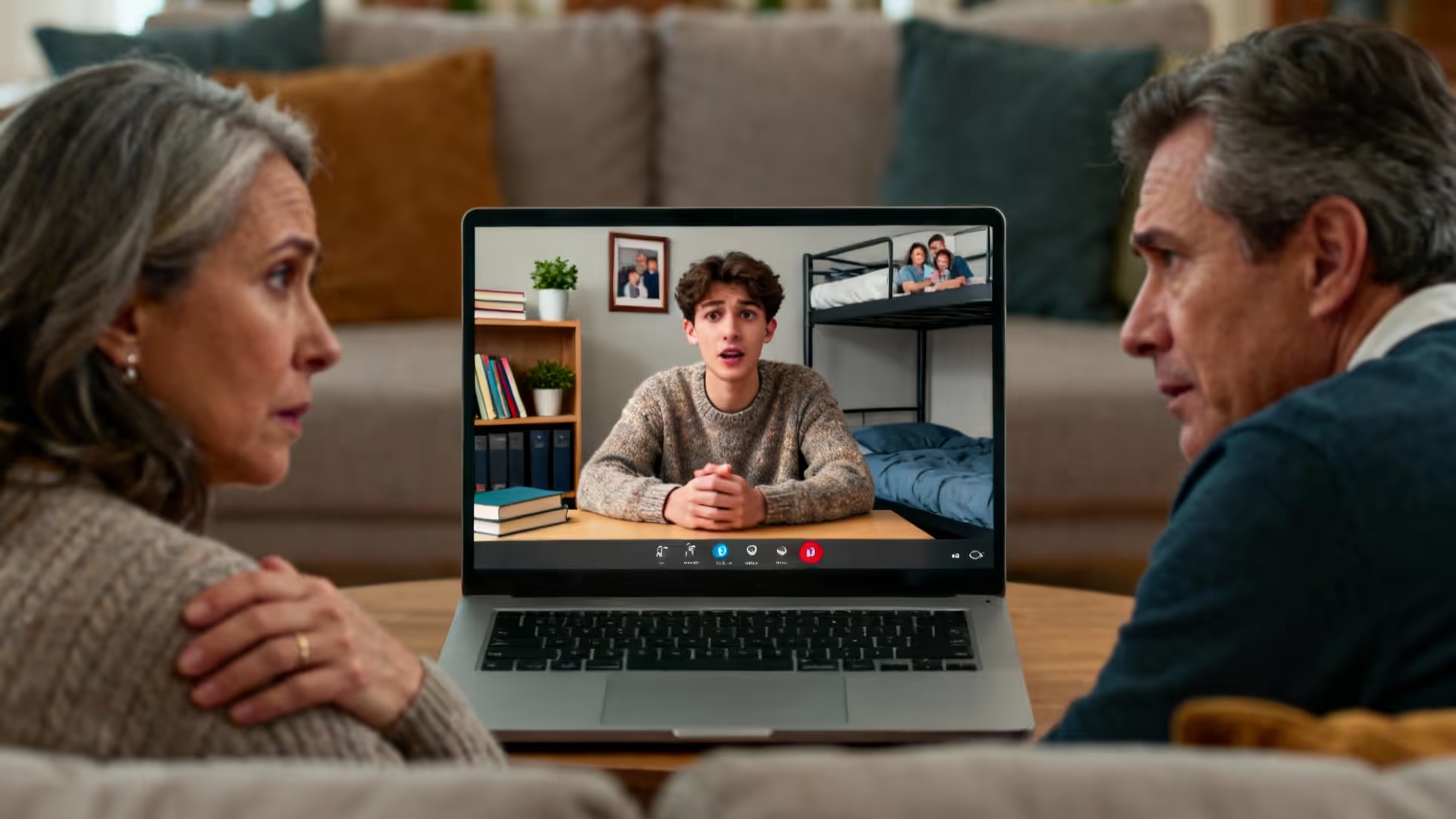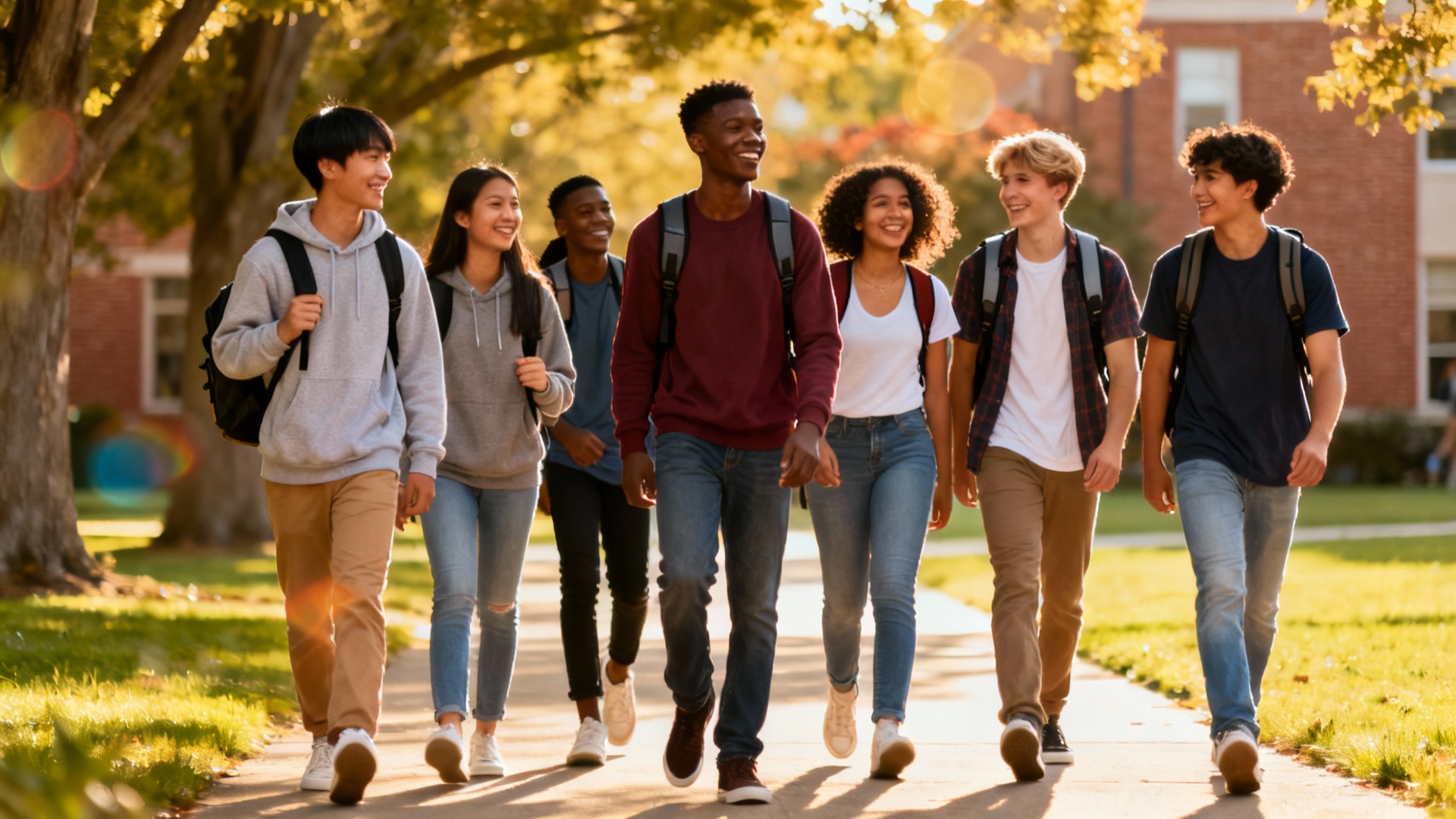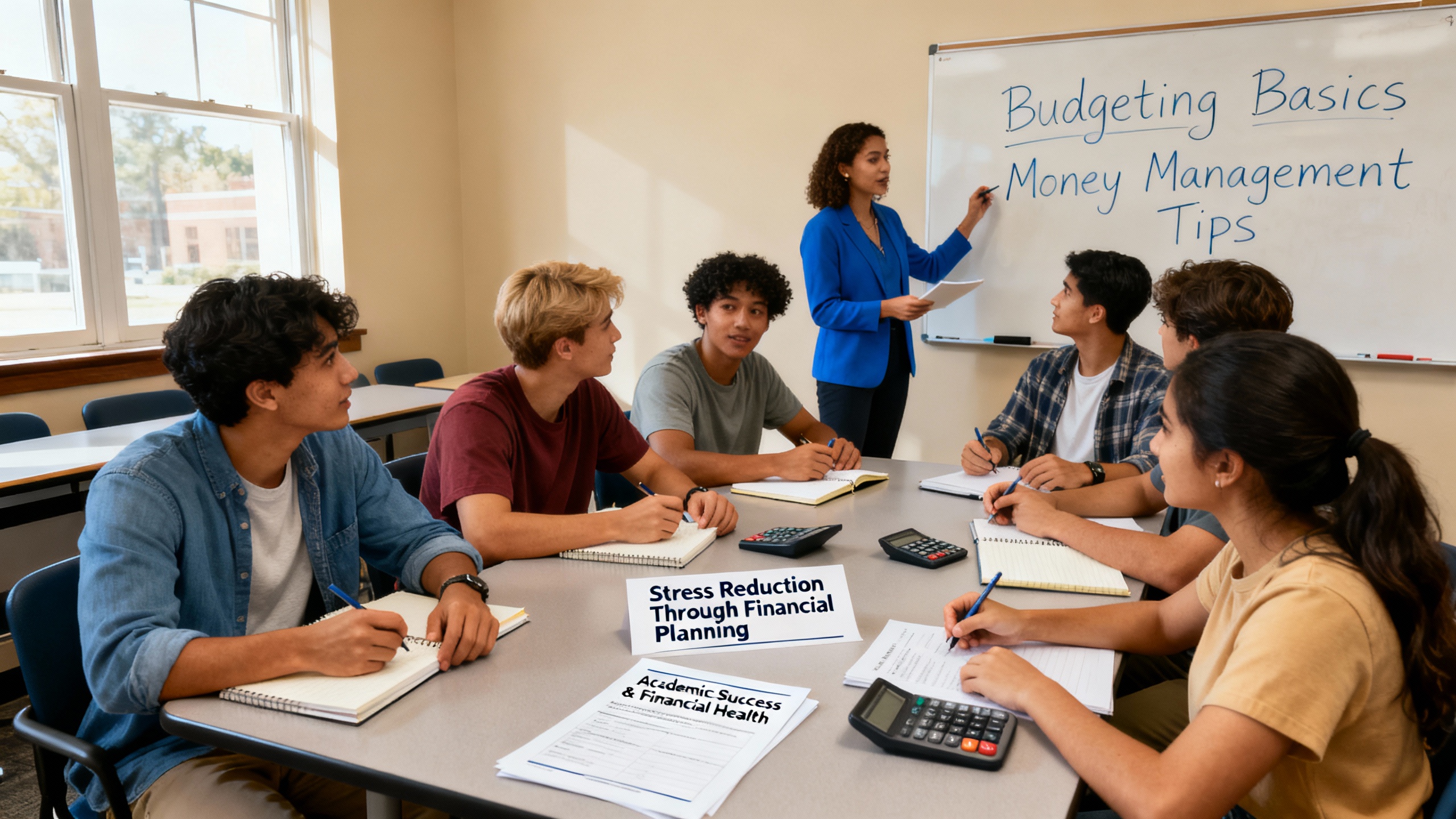Featured Snippet
Student communications strategies balance targeted nudges with noise reduction to boost engagement. Smart universities use text messaging alongside email, personalize content by student groups, and prevent notification fatigue through strategic timing. Research shows targeted nudges get much higher engagement than mass emails.
Introduction
Picture this: It's Monday morning. A university sends 5,000 identical emails to every student on campus. By noon, only 850 students have opened them. Meanwhile, critical deadlines pass unnoticed and opportunities slip away.
This scenario plays out at colleges nationwide every single day. In 2025, 68% of students still prefer email communication early in their college search, yet universities struggle to reach them effectively. The disconnect isn't about the channel — it's about the approach.
Why Mass Emails Fail
Think of mass emails like shouting in a crowded room. Everyone hears you, but no one really listens.
Education-sector emails average just 17.38% open rates and 3.38% click rates. That means for every 100 messages sent, only 17 students open them. Even fewer take action.
Students receive dozens of university emails weekly. Academic departments send updates. Student services share reminders. Campus organizations promote events. The result? Information overload that drives students to hit delete without reading.
More than half (54%) of students avoid emails from universities or academic departments. Even worse, 72% treat messages from student organizations as spam. When everything seems urgent, nothing feels important anymore.
The Hidden Cost of Digital Fatigue
Ever feel exhausted just looking at your inbox? You're not alone.
Digital fatigue creates mental exhaustion with stress, anxiety, irritability, and decreased motivation from constant notifications, emails, and messages. For students juggling classes, work, and life, this fatigue hits hard.
Research reveals the scope of the problem. About 39% of university students report suffering from fatigue. During exam periods, these numbers spike even higher.
Students develop coping strategies that hurt communication:
Auto-deleting university emails
Filtering entire domains to spam
Ignoring all non-personal messages
Missing critical information
The cycle continues. Universities send more messages to ensure visibility. Students feel more overwhelmed. Nobody wins.
Smart Nudges That Actually Work
Here's what changes everything: strategic nudging.
Instead of blasting everyone with everything, smart universities send the right message to the right student at the right time. The results speak for themselves.
Text messages achieve a 98% open rate and 45% response rate, with 90% of texts opened within three minutes. Compare that to email's 25% open rate and 7% response rate.
Real universities prove this works:
New Mexico State University sees 20-30% click rates for SMS campaigns, with one scholarship reminder achieving 45% click rate
Georgia State University's "Pounce" chatbot led to significantly higher completion rates of enrollment steps among freshmen
Hartford Community College found students attending campus events are 53.7% more likely to persist to the next academic year
Building Your Segmentation Strategy
Stop treating all students the same. Start grouping them meaningfully.
By Academic Journey:
Freshmen need campus basics and social connections
Sophomores want major selection and career guidance
Juniors seek internships and graduate school prep
Seniors require job placement and graduation details
By Engagement Level:
Active students appreciate event updates
At-risk students need personal outreach
High achievers want scholarship opportunities
Part-time students require flexible scheduling info
By Communication Preference: Hispanic families are more likely to prefer SMS, along with Black, first-generation, and low-income families. Respect these preferences to build trust.
By Academic Program: Science students need lab updates. Business students want networking events. Art students seek gallery openings. Match messages to majors.
Choosing the Right Channel
Different messages need different channels. Here's your playbook:
Text Messages - For Urgent Info: Over 91% of college students prefer text messages over voicemail for institutional information. Use SMS for:
Payment deadlines (today!)
Class cancellations
Emergency alerts
Registration reminders
Quick confirmations
Email - For Detailed Content: Email still achieves 28.5% open rates in education when personalized. Best for:
Course syllabi
Policy updates
Newsletter content
Complex instructions
Reference materials
Mobile Apps - For Always-On Access: Gen Z spends over 7 hours daily on smartphones. Apps work for:
Class schedules
Campus maps
Resource directories
Grade checking
Event calendars
Social Media - For Community Building: Use platforms where students naturally gather for:
Campus culture content
Student achievements
Fun updates
Photo galleries
Informal polls
Perfect Your Timing
When you send matters as much as what you send.
Monday shows the highest email open rates at 22.0%, while Tuesday delivers the best click-through rates at 2.4%. But timing goes deeper than days of the week.
Registration Period: Send reminders two weeks early, not two days Financial Aid: Align with family budget planning cycles Events: Give students time to adjust schedules Finals Week: Emergency messages only Holiday Breaks: Pause non-essential communication
Morning messages work for administrative tasks. Afternoon texts suit social events. Evening emails allow reflection time. Match timing to message type.
Forget vanity metrics. Focus on results.
Basic metrics tell part of the story:
Open rates show initial interest
Click rates indicate engagement
Response rates measure action
But dig deeper:
Did students register after your reminder?
Did attendance increase at events?
Did fewer students miss deadlines?
Did retention rates improve?
Alumni organizations report 0.5% unsubscribe rates versus the 0.2% industry average — a 150% difference showing room for improvement. Watch unsubscribe rates as your early warning system.
Create feedback loops. Survey students quarterly. Host focus groups. Track which messages drive behavior change. Adjust based on what you learn.
Build a Sustainable System
Great communication requires organization-wide commitment.
Start with governance:
Create a communication calendar
Coordinate across departments
Set message frequency limits
Establish approval processes
Define emergency protocols
Train your team:
Write for stressed, busy students
Use scannable formats
Lead with key information
Include clear action steps
Test before sending
Universities increasingly invest in professionalizing student communications strategies, establishing dedicated functions for institution-wide approaches. This investment pays off through better engagement and outcomes.
Listen and Adapt
Students hold the answers. Ask them.
Regular surveys reveal preferences:
Preferred channels by message type
Optimal sending frequency
Best times to communicate
Topics that matter most
Problems with current systems
Middle school students strongly prefer texts with multiple-choice options for feelings about schoolwork and texts with words/emojis for submission reminders. Similar patterns emerge in higher education.
Let students customize preferences:
Channel selection (email, text, app)
Message frequency (daily, weekly, as-needed)
Topic interests (academic, social, career)
Time preferences (morning, afternoon, evening)
Language options (English, Spanish, other)
When students say they're overwhelmed, believe them. Adjust your approach. Test new strategies. Keep what works. Drop what doesn't.
Works Cited
[10] Modern Campus — "The Future of Campus Communication: Trends in 2025." URL: https://moderncampus.com/blog/the-future-of-campus-communication-trends-in-2025.html. Published: 2025-09-08. Accessed: 2025-09-29.
[11] Taylor & Francis — "Student communications: a review of current practices and scoping a new vision." URL: https://www.tandfonline.com/doi/full/10.1080/13603108.2024.2449395. Published: 2025-01-09. Accessed: 2025-09-29.
[14] Honor Society — "Understanding Digital Fatigue and Its Impact on College Students." URL: https://www.honorsociety.org/articles/understanding-digital-fatigue-and-its-impact-college-students. Accessed: 2025-09-29.
[20] NIH/PMC — "Sleep Quality and Fatigue during Exam Periods in University Students." URL: https://pmc.ncbi.nlm.nih.gov/articles/PMC10487416/. Accessed: 2025-09-29.
[29] Inside Higher Ed — "Underestimating the Potential of Email." URL: https://www.insidehighered.com/blogs/call-action-marketing-and-communications-higher-education/underestimating-potential-email. Accessed: 2025-09-29.
[31] Alumni Access — "New Data: Why Your Alumni Should be Getting More Relevant Emails." URL: https://blog.alumniaccess.com/your-alumni-should-be-getting-more-relevant-emails. Published: 2023-08-14. Accessed: 2025-09-29.
[33] Campaign Monitor — "Email Marketing Benchmarks and Statistics for 2022." URL: https://www.campaignmonitor.com/resources/guides/email-marketing-benchmarks/. Published: 2023-01-31. Accessed: 2025-09-29.
[34] Moorpark College — "Effectiveness, Advantages, and Applications of SMS in Higher Education." URL: https://www.moorparkcollege.edu/sites/moorparkcollege/files/media/document/2022/. Accessed: 2025-09-29.
[36] Textedly — "Higher Education Mass Texting: How To Use SMS for Colleges." URL: https://www.textedly.com/sms-text-messsaging-for-colleges. Accessed: 2025-09-29.
[42] CampusESP — "4 real examples of universities using SMS to drive results." URL: https://www.campusesp.com/blog/4-easy-ways-to-reach-campus-goals-through-sms. Published: 2023-05-17. Accessed: 2025-09-29.
[43] Modern Campus — "Texting for Student Retention in Higher Education." URL: https://moderncampus.com/blog/5-ways-texting-supports-retention.html. Published: 2025-03-06. Accessed: 2025-09-29.
[46] Inside Higher Ed — "Study explores impact of social media, texting on email use." URL: https://www.insidehighered.com/news/2016/03/02/study-explores-impact-social-media-texting-email-use. Accessed: 2025-09-29.
[47] EAB — "Is email marketing to prospective students dead? Not so fast." URL: https://eab.com/resources/blog/enrollment-blog/is-email-marketing-to-prospective-students-dead-not-so-fast/. Published: 2025-04-24. Accessed: 2025-09-29.
[49] Sixth City Marketing — "50+ Marketing Stats for Colleges in 2025." URL: https://www.sixthcitymarketing.com/2024/04/05/higher-education-marketing-stats/. Published: 2025-07-17. Accessed: 2025-09-29.
[54] Science and Education Publishing — "Student Preferences about Student-Teacher Communication Using Text Messages." URL: https://pubs.sciepub.com/education/11/10/10/index.html. Published: 2023-10-11. Accessed: 2025-09-29.
Frequently Asked Questions
Q: Why do mass emails fail in higher education? A: Mass emails fail because they create information overload without personalization. With only 17% open rates, students treat them like spam. When universities send identical messages to thousands of students regardless of relevance, critical information gets lost. Students receive dozens of emails weekly from different departments, leading to automatic deletion behaviors and missed deadlines.
Q: How can universities prevent student notification fatigue? A: Prevent fatigue by limiting messages per week, coordinating across departments, and letting students choose their preferences. Create shared calendars to avoid message clustering. Send only essential messages during finals week. Use different channels for different urgency levels. Most importantly, survey students regularly and adjust when they report feeling overwhelmed by communications.
Q: What's the difference between SMS and email for student communication ? A: SMS achieves 98% open rates with 90% read within three minutes, while email gets 25% opens with slower response times. Texts work best for urgent, short messages like deadline reminders. Email suits detailed content students need to reference later. SMS gets 6% click rates versus email's 2.6%, making texts better for immediate action items.
Q: How should universities segment their student communications? A: Segment by academic year (freshmen need different info than seniors), engagement level (active versus at-risk students), demographic preferences (some groups prefer SMS), and academic programs (science students need lab updates). Also consider part-time versus full-time status, residential versus commuter students, and international versus domestic students for relevant messaging.
Q: When is the best time to send student communications? A: Monday gets highest email open rates (22%) while Tuesday drives best click-through rates (2.4%). Send administrative messages in mornings, social events in afternoons, and reflection content in evenings. Give two weeks notice for registration, align financial aid with family budgets, and avoid non-emergency messages during finals week.




